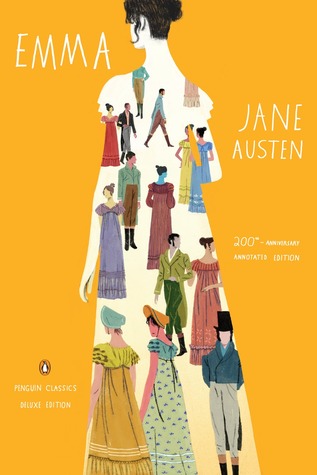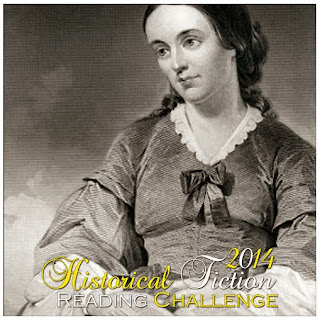This is not precisely a review of Pride and Prejudice: A Novel. In Three Volumes. (Annotated and Restored to 1813 Egerton First Edition) by Jane Austen and Sophie Turner, as much as it is a look at why this revised edition was created. I’ve read this novel more times than any other, and because I do love it so much, I wanted to take a look at what Sophie Turner found in her endeavor to return the novel as close to Jane Austen’s original as possible. As grammar rules as we know them today were not as established when Austen wrote, there is a sort of free flow with her use of grammar and words.
This is particularly of interest, as the examples cited by Turner indicate how well placed Austen’s commas are in an effort to create a distinct voice for her characters. I also loved that the exclamation points we often think of as part of Mrs. Bennet’s character are not as plentiful as one would assume. I thoroughly enjoyed reading through this novel again, as well as Turner’s annotations. As an editor, I’m obviously fascinated with the choices that novelists make in word choice and punctuation.
Check out Pride and Prejudice: A Novel. In Three Volumes. (Annotated and Restored to 1813 Egerton First Edition) by Jane Austen and Sophie Turner to find Austen’s more authentic voice.
RATING: Cinquain
About the Book:

In 2017, the 200th anniversary of Jane Austen’s death, her “darling Child” has been painstakingly restored to the three-volume 1813 first edition. Adjustments have only been made where there were errors in the 1813 text, and are noted in detailed annotations at the end of the novel.
Please enjoy this beloved story, restored to Jane Austen’s original voice.

Sophie Turner worked as an online editor before delving even more fully into the tech world. Writing, researching the Regency era, and occasionally dreaming about living in Britain are her escapes from her day job.
She was afraid of long series until she ventured upon Patrick O’Brian’s 20-book Aubrey-Maturin masterpiece, something she might have repeated five times through.
Alas, her Constant Love series is only planned to be seven books right now, and consists of A Constant Love, A Change of Legacies, and the in-progress A Season Lost.
She blogs about her writing endeavours at sophie-turner-acl.blogspot.com, where readers can find direction for the various social drawing-rooms across the Internet where she may be called upon. Visit her: Facebook, Twitter, Sophie Turner’s Blog, Goodreads, Pinterest, and Amazon.
International Giveaway:
To enter, leave a comment about why you’d like to read this new ebook edition of Pride & Prejudice by Jane Austen, annotated by Sophie Turner. Enter by Sept. 15, 2017, 8 p.m. EST.
Good Luck, everyone.






 Isaac Watts (1674-1748), known as “The Father of English Hymnody” (despite his nonconformist faith), was a prolific writer and English minister. Many of his hymns remain in use today, and he is credited with ushering in a new era of English hymnody, one based on original poetry instead of biblical psalms (though his most famous, Joy to the World, is based on Psalm 98). His poem “Against Idleness and Mischief” from Divine Songs for Children was particularly famous in its day. It is not just referenced by Carroll, but also makes an appearance in Charles Dickens’s David Copperfield.
Isaac Watts (1674-1748), known as “The Father of English Hymnody” (despite his nonconformist faith), was a prolific writer and English minister. Many of his hymns remain in use today, and he is credited with ushering in a new era of English hymnody, one based on original poetry instead of biblical psalms (though his most famous, Joy to the World, is based on Psalm 98). His poem “Against Idleness and Mischief” from Divine Songs for Children was particularly famous in its day. It is not just referenced by Carroll, but also makes an appearance in Charles Dickens’s David Copperfield. Carroll is quite clever in turning a poem about industry and the dangers of idleness into an exotic tale of a languid creature, intuitively going about its business of feeding on its prey. His mockery of Watts’s didactic purpose beautifully suits the overall absurdity of Wonderland, where all morality and natural law is entirely turned on its head. Following in his path, I chose to make my parody a tribute to Lady Bertram of
Carroll is quite clever in turning a poem about industry and the dangers of idleness into an exotic tale of a languid creature, intuitively going about its business of feeding on its prey. His mockery of Watts’s didactic purpose beautifully suits the overall absurdity of Wonderland, where all morality and natural law is entirely turned on its head. Following in his path, I chose to make my parody a tribute to Lady Bertram of 












 Mailbox Monday, created by Marcia at
Mailbox Monday, created by Marcia at  1. Jane Austen and Food by Maggie Lane
1. Jane Austen and Food by Maggie Lane



 6. A Killing in Kensington by Mary Lydon Simonsen
6. A Killing in Kensington by Mary Lydon Simonsen

 10. Ride for Rights by Tara Chevrestt
10. Ride for Rights by Tara Chevrestt









